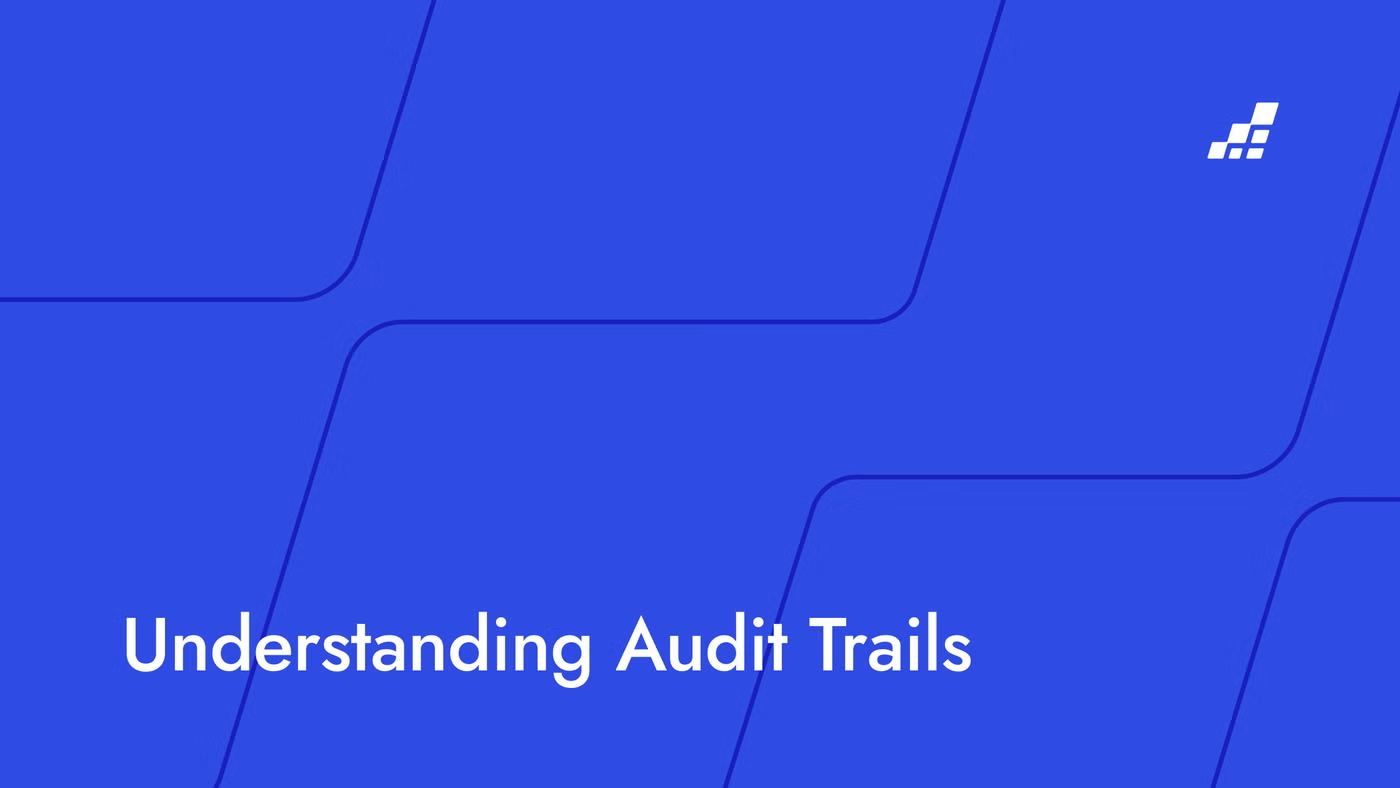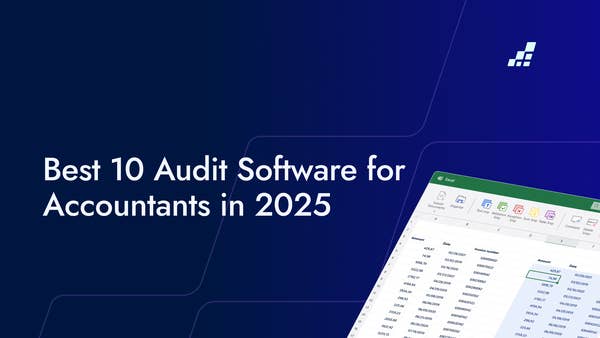- /
- Blog
Understanding Audit Trails

In the worlds of business, finance, and IT, the term "audit trail" frequently pops up in conversations about accountability, transparency, and data integrity.
But what does it really mean? Why is it so important? And how does it function? Let's explore these questions in straightforward terms.
Audit Trails: Definition
An audit trail is like a log of events, showing what happened and when. It helps us track actions in order, revealing who did what and when they did it. This record is crucial for following changes made to things like operations, processes, or events, especially in fields like accounting and information systems.
Components of an Audit Trail
An audit trail comprises several key components that collectively provide a comprehensive view of a transaction. These include:
- Source of the Transaction: Identifies where the transaction originated.
- Destination: Indicates where the transaction is headed or where it is applied.
- Date and Time: Records the exact date and time the transaction occurred.
- Specific Details of th Transaction: Provides detailed information about the nature and content of the transaction.
- User Identification: Tracks who initiated the transaction or event, linking it to a specific user.
These components allow for easy tracking and verification of transactions, contributing to the security of the system by helping to identify any unauthorized or fraudulent activities.
Importance of Audit Trails
Accountability
Audit trails are really important for accountability. They keep a record of who's been using a system, what they've been doing, and when. This helps make sure people are responsible, especially when data gets changed or deleted.
For businesses, this accountability is super important. It helps stop fraud and lets them catch any sneaky access to their systems.
Transparency
Audit trails also bring transparency. They give a clear record of transactions, showing exactly what went down at any time. This is handy for checking if a transaction is correct or digging into a problem.
Plus, this transparency helps build an open and honest vibe in a company. When employees know their actions are being tracked, they're more likely to stick to the rules.
How Audit Trails Work
Understanding what an audit trail is and why it's vital, let's delve into how it operates. The process kicks off when a transaction is initiated, whether it's a financial move or a user logging into a system.
Once the transaction begins, the system automatically generates a record of the event. This record contains essential details such as the timestamp, parties involved, and transaction specifics. This data is securely stored for future reference as needed.
What Are Audit Trails Used For?
Audit trails are used for several important purposes in different fields. Here are some key uses:
- Accountability: Keeping track of who did what and when, so individuals or systems can be held responsible for their actions.
- Compliance: Meeting regulatory and legal requirements by maintaining detailed records of transactions and activities.
- Security: Detecting and preventing unauthorized access or fraudulent activities by tracking all actions and changes in the system.
- Problem Resolution: Helping diagnose and resolve issues by providing a detailed history of events to identify the root cause of problems.
- Transparency: Providing a clear and transparent record of activities, which helps build trust among stakeholders, customers, and regulatory bodies.
- Data Integrity: Ensuring the accuracy and reliability of data by keeping a comprehensive log of all changes and transactions.
- Audits: Making internal and external audits easier by providing a detailed and traceable log of activities for review and verification.
- Performance Monitoring: Tracking the performance and usage of systems or processes to identify inefficiencies and areas for improvement.
- Historical Analysis: Allowing the review of past transactions and events to inform future decisions and strategies.
Types of Audit Trails
Below we've shared the most important types of audit trails per sector:
Finance and Banking
- Transaction Audit Trails: Ensure accuracy in financial records by tracking transaction details such as amounts, dates, and parties involved. Crucial for auditing financial statements and complying with financial regulations (e.g., SOX compliance).
- System Audit Trails: Monitor user activities within banking systems to detect unauthorized access or fraudulent transactions. Record login attempts, account changes, and system configurations to ensure data security and regulatory compliance.
IT and Cybersecurity
- System Audit Trails: Track system events like login attempts, file access, and configuration changes to detect and investigate security breaches. Essential for forensic analysis and compliance with data protection laws (e.g., GDPR, CCPA).
- Application Audit Trails: Capture user interactions with software applications to ensure compliance with development standards, debug issues, and maintain software integrity.
Healthcare
- Compliance Audit Trails: Maintain detailed records of patient data access, treatment procedures, and administrative actions to comply with healthcare regulations (e.g., HIPAA). Ensure patient privacy and security through audit logs of electronic health records (EHRs) and medical devices.
- Operational Audit Trails: Track inventory management, patient scheduling, and medical procedures to improve operational efficiency, ensure quality of care, and comply with healthcare standards (e.g., HITECH Act).
Manufacturing and Logistics
- Operational Audit Trails: Monitor production processes, inventory movements, and supply chain activities to optimize efficiency and ensure compliance with industry standards (e.g., ISO 9001). Record quality control measures, equipment maintenance, and logistics operations for audit and process improvement purposes.
Government and Public Sector
- User Activity Audit Trails: Track government employee actions within administrative systems to ensure transparency, accountability, and compliance with regulatory requirements. Monitor access to sensitive information and record system changes to prevent unauthorized access and uphold public trust.
- Compliance Audit Trails: Maintain records of regulatory compliance audits, financial transactions, and public service delivery to ensure adherence to legal and regulatory requirements. Document procurement processes, budget allocations, and program implementations for transparency and accountability.
Telecommunications and Networking
- Network Audit Trails: Monitor network traffic, device connections, and system configurations to detect and respond to security incidents (e.g., cyberattacks, data breaches). Record access attempts, data transfers, and network performance metrics to optimize network operations and comply with telecommunications regulations (e.g., FCC guidelines).
Data Management and Information Systems
- Data Audit Trails: Track changes to databases and information systems to ensure data integrity, support data recovery efforts, and comply with data protection regulations (e.g., GDPR, HIPAA). Record data access, modifications, and deletions to prevent data loss and unauthorized use.
DataSnipper and Audit Trails
Datasnipper offers invaluable support for managing audit trails effectively. By centralizing audit evidence and seamlessly linking each data point to its supporting document, Datasnipper streamlines the auditing process and enhances the reliability of the audit trail.
With all relevant information easily accessible in one place, organizations can ensure accountability, compliance, and data integrity with greater ease and confidence.
Frequently Asked Questions About Audit Trails
What is the primary purpose of an audit trails?
The primary purpose of an audit trail is to provide a clear and traceable record of activities, transactions, or events, ensuring accountability, transparency, security, and compliance.
Why do you need audit trails?
Audit trails are needed to ensure accountability, transparency, detect unauthorized activities, support compliance with regulations, facilitate problem resolution, and enable historical analysis of events.



.png?width=600&quality=70&format=auto&crop=16%3A9)